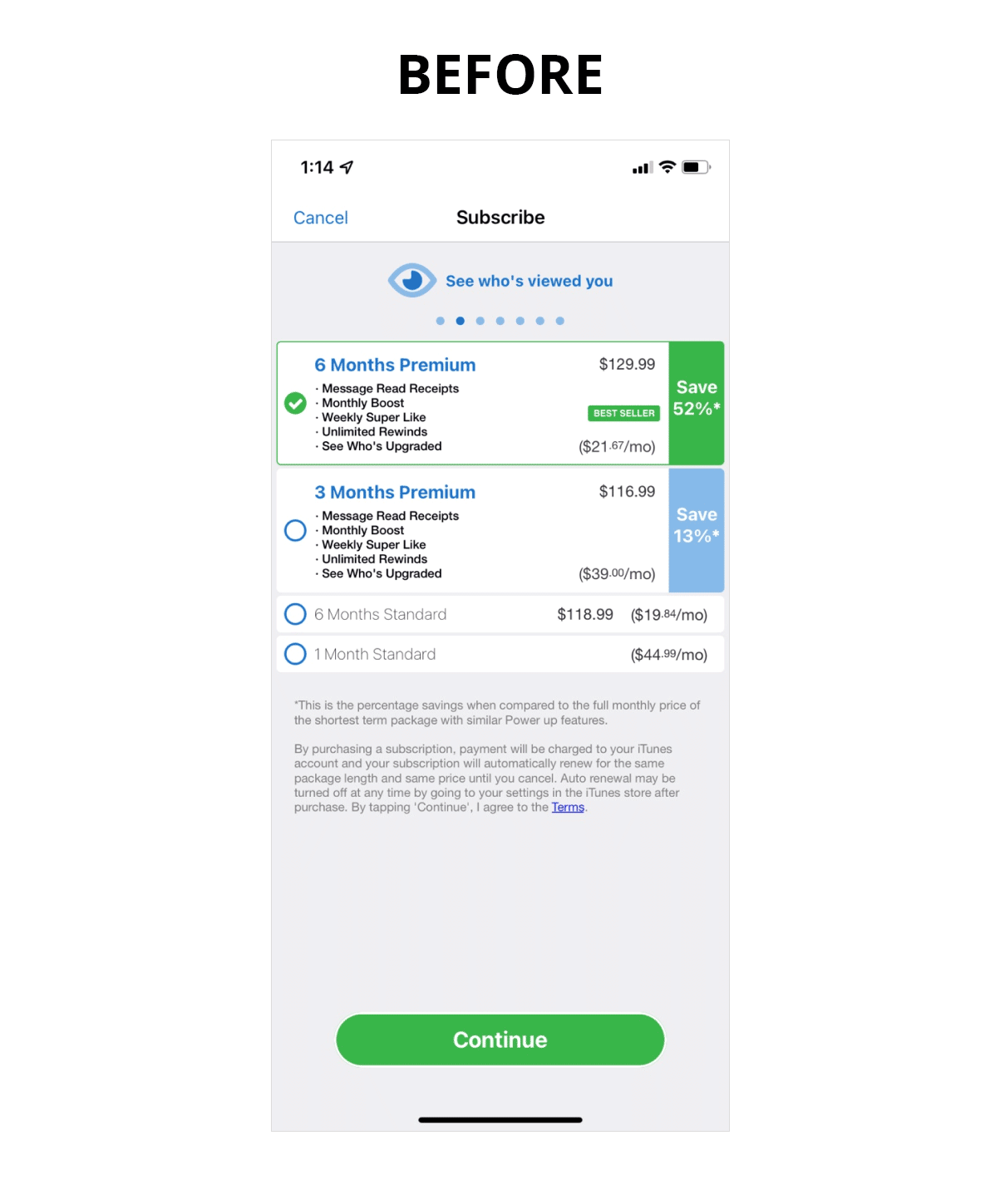
Match’s New Business Model
Role
As the primary Product Designer, my role includes: concept definition, design strategy, research, UX/UI design, prototyping, branding, and dev handoff.
Duration
3 months
Overview
For 28 years, Match operated on a pay-to-use/chat model, meaning that users would have to pay to chat with their matches. This posed a big challenge for us, as newer dating apps offers free chatting. Through a comprehensive redesign of its end-to-end flow, Match successfully transitioned to a freemium business model.
Team
Product Manager: Hasan Mukati, Suresh Yalamanchili
Researcher: Cara Reschke
Tools
Figma, Illsutrator, Photoshop
Scope
Prototyping, Strategy, UI/UX
The Problem
Match's pay-to-use/chat business model no longer meets competitive standards and hinders users from finding suitable matches effectively. This leads to user dissatisfaction and a lack of incentive to return, as they are frustrated by numerous paywalls.
The Hypothesis
Offering free chat with mutual matches will modernize the product and enhance the user experience. By implementing these changes, we anticipate improvements in Daily Active Users (DAU) and retention rates. This growth, combined with the shift to a premium model, will help offset the revenue loss resulting from making all mutual matches free.
Goals/Success Metrics
Enhance App Store Ratings
Increase DAU
Elevate Net Promoter Score (NPS)
Boost Retention Rates
Discover
To gain a deeper understanding of the problem, we meticulously crafted a comprehensive user journey map. This map charts the entire user experience, highlighting both the positive and negative aspects encountered along the way.
I also created a new account and tested the product for 2 weeks as a real user, recording every notification and email that could confuse or annoy the user. I received 22 emails the first day, and reported this. As a result, email notifications were eased.
I further refined our understanding of the user journey by creating a comprehensive site map.
From our users:
We further delved into our user feedback (including App Store reviews, NPS, and diary studies). Through this analysis, we identified pay-to-chat as the primary complaint among users.
“I am very surprised that a dating app limits me to one free conversation. This would immediately turn me off from an app.”
— Matthew, 30 M, New Brunswick, NJ
“Everything also sounds like a sales pitch, once you are on free they want to upsell you. It feels like even when I am on premium I still feel that way.”
— Lauren, 60 F, North Miami, FL
“I can understand not seeing users that liked your profile or those that viewed your profile but if the users are mutual matches, how much revenue is lost in not allowing them to message each other through the app? It sends the message that Match is centered around the matching of ‘profiles’ and not the people in the profiles.”
— Julia, 38 F, Bradenton, FL.
Define
User Personas
Drawing from insights gathered during the Discovery phase, I developed three distinct personas. These personas represent various age groups, each with unique lifestyles and personalities.



Current Rate Card
Recognizing the significant impact that altering the business model could have on revenue, I approached all monetization-related aspects with careful consideration. In the past, rate card iterations often lost in testing. However, I identified the existing rate cards as a source of confusion and detrimental to the experience if kept the same because they were found to be unclear and misleading, lacking transparency regarding the user benefits. Additionally, they appeared outdated compared to other elements of the user experience.
Develop
Rate Card Testing
Following thorough competitive research, we developed two primary concepts for the rate card. One approach involved presenting it as a single step, while the other utilized a two-step process. Through rigorous user testing, we discovered that the two-step method significantly enhanced user comprehension. We also learned that having the higher duration at the top was better for monetization goals. As a result, we used the two-step approach for the launch.












